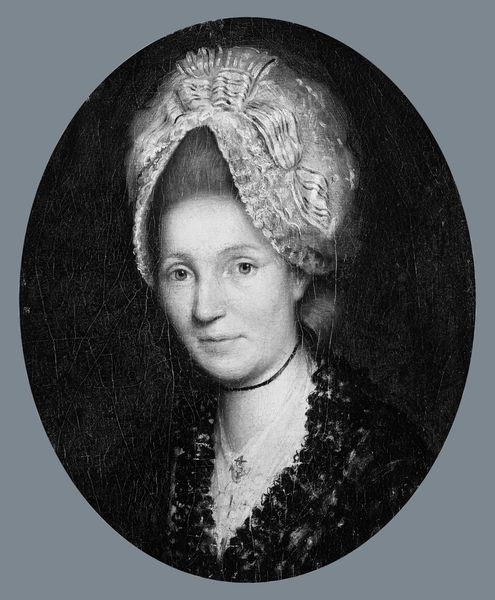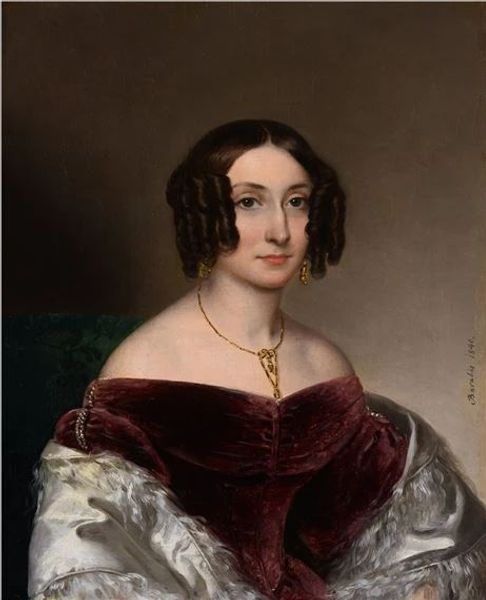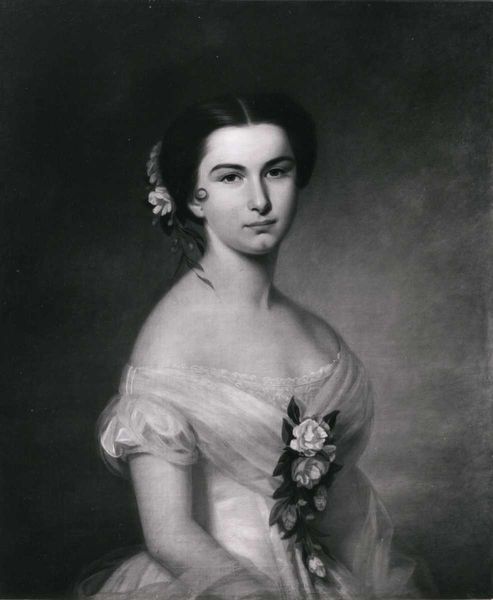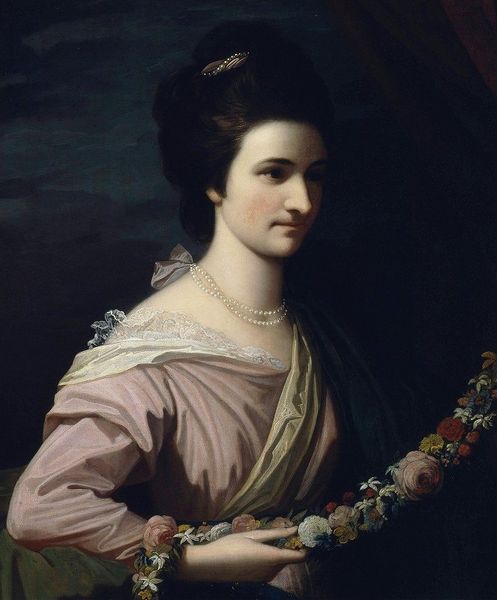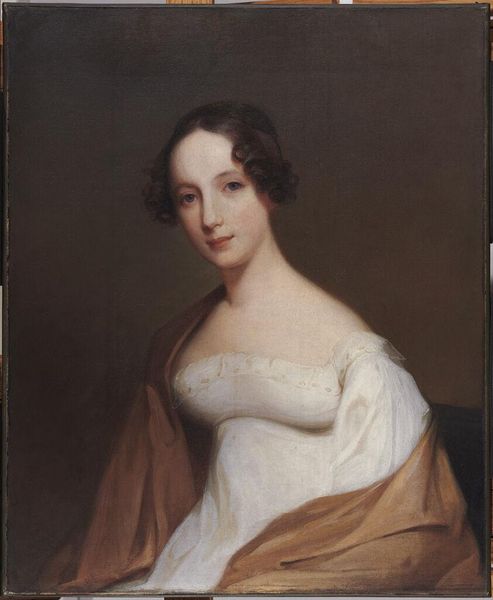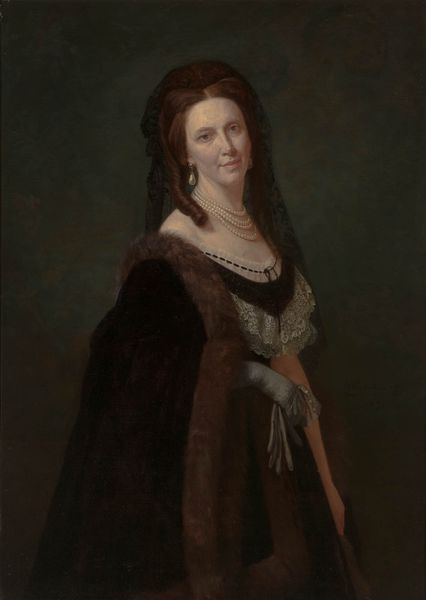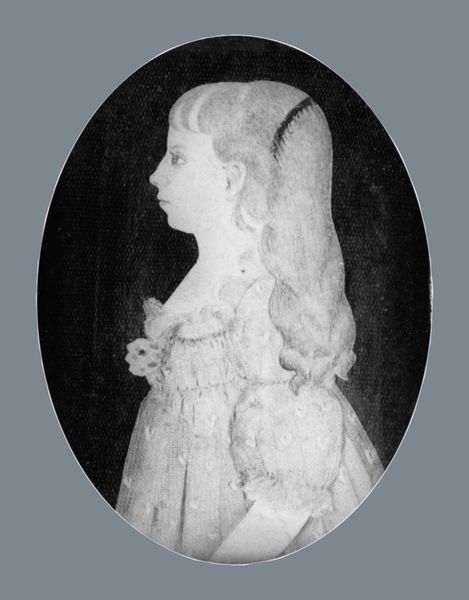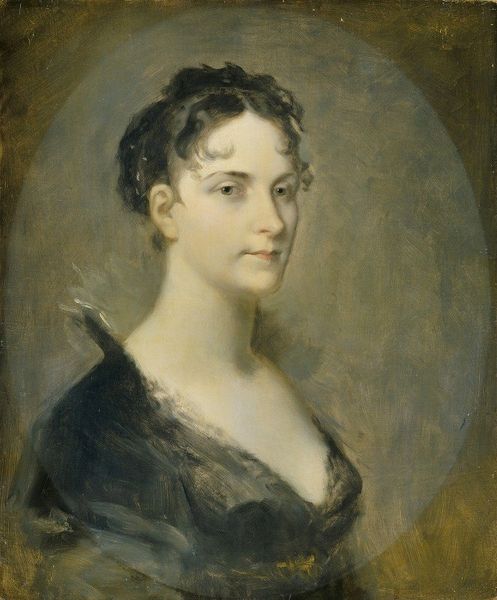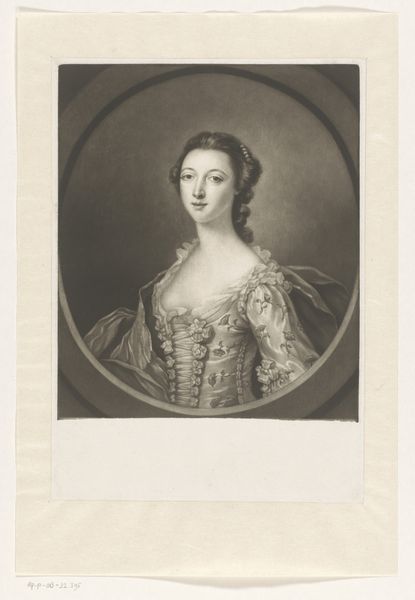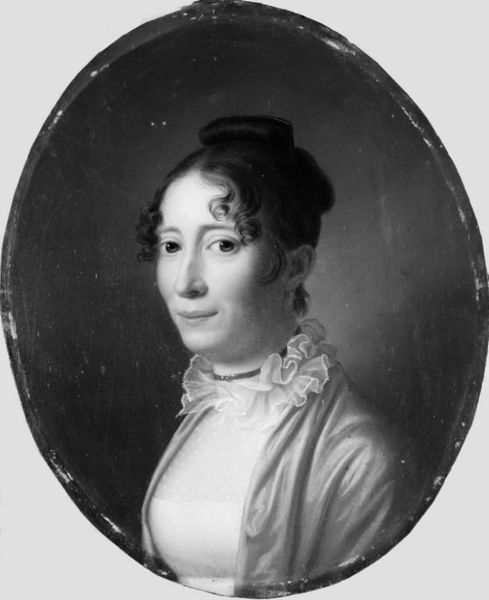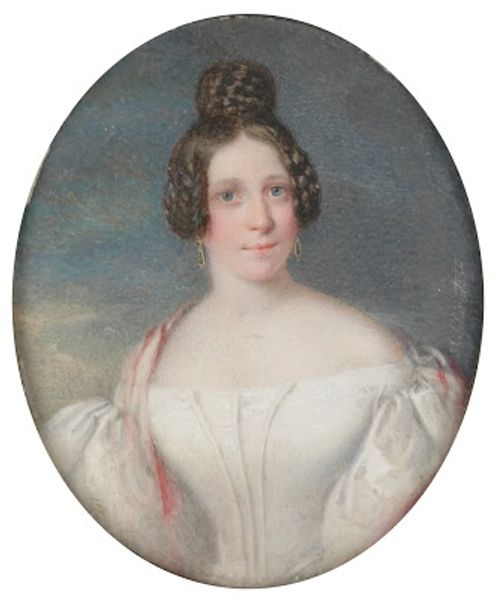
Dimensions: 29 3/4 x 25 in. (75.6 x 63.5 cm)
Copyright: Public Domain
Curator: Here we have Matthew Pratt's "Mrs. Peter De Lancey," completed circa 1768-1771. Pratt, a prominent figure in colonial American portraiture, presents us with a compelling, if reserved, image of a woman of status. Editor: She definitely exudes a poised calm. I’m immediately drawn to the tonal simplicity, that delicate chiaroscuro across her face and the stark contrast against the dark, almost melancholic background. Curator: It's worth considering this portrait within the social context of its time. Portraiture served as a crucial marker of social standing for colonial elites like Mrs. De Lancey. Her dress, pose, and the very commission of the portrait would communicate a specific message about her family's status. Editor: Absolutely. Notice how the oval format enhances that sense of contained elegance. Her gaze is direct but softened. And look at how Pratt uses the interplay of light and shadow to sculpt her features, giving them a classic, almost neoclassical form. Curator: We also need to recognize that Pratt's training and the prevailing artistic conventions shaped his portrayal. While rooted in the baroque tradition, with its emphasis on realism and drama, this is also an example of his exposure to emergent Neoclassical ideals influencing colonial portraiture. Editor: Yes, the drape of her shawl almost feels Grecian. However, what’s missing, I think, is dramatic movement; everything is rigidly symmetrical within this carefully crafted composition. The muted palette reinforces this air of controlled, refined taste. Curator: It speaks to how identity was carefully constructed and performed through visual representation in that era, doesn't it? Each detail—her hairstyle, her dress—plays into this codified language of status and respectability that was crucial for women like Mrs. De Lancey. Editor: I agree. Although visually muted, there's also such stillness, it seems. What lingers is the portrait’s quiet declaration of being, rather than doing, perfectly embodying the aesthetic and societal expectations of elite colonial womanhood. Curator: It makes you wonder about the story beneath the surface—the unspoken experiences shaping her identity within those constraints. Editor: A powerful testament, then, to the language of form, and the world it reflects, consciously or not.
Comments
No comments
Be the first to comment and join the conversation on the ultimate creative platform.
